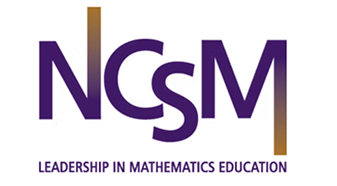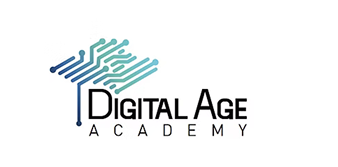Probablistic language
When communicating with others, employ both plain-language and clear vocabulary to regularly describe degrees of uncertainty, both formally and informally as a thinking habit.
K–2 Competencies
Recognize that some situations are not binary and find appropriate vocabulary to describe them. e.g., a classmate riding the bus to school could be "always," "sometimes," or "never"
Classroom resources
Data Science Starter Kit Module 4: Drawing Conclusions - Interpreting Problems and Results
Welcome to one of the most critical skills in data science—learning how to draw valid conclusions from data and understanding what those conclusions can and cannot tell us. This module focuses on the thinking skills that separate good data science from misleading claims.🔗
Interpreting Problems and Results isn’t about complex statistical tests or advanced mathematics. It’s about developing the intellectual honesty and critical thinking skills to say, “Based on this data, here’s what we can reasonably conclude, here’s what we’re not sure about, and here’s what we still need to investigate.”
3–5 Competencies
Formulate a guess or hypothesis and identify informal vocabulary to convey your level of confidence. e.g., I strongly believe most of my classmates ride the bus to school because XX or YY
Classroom resources
Data Science Starter Kit Module 4: Drawing Conclusions - Interpreting Problems and Results
Welcome to one of the most critical skills in data science—learning how to draw valid conclusions from data and understanding what those conclusions can and cannot tell us. This module focuses on the thinking skills that separate good data science from misleading claims.🔗
Interpreting Problems and Results isn’t about complex statistical tests or advanced mathematics. It’s about developing the intellectual honesty and critical thinking skills to say, “Based on this data, here’s what we can reasonably conclude, here’s what we’re not sure about, and here’s what we still need to investigate.”
6–8 Competencies
Express a finding and quantify your confidence in it by stating the degree of certainty regarding the result. e.g., I am highly confident that a majority of students in my area ride the bus to school, based on separate sources' estimations of 60%, 62.3%, and 65% of students ride the bus to school
Classroom resources
Blinking Out Activity by DataClassroom
The purpose of thislesson is to help students understand how long-term ecological data collectionenables scientists to identify environmental changes and population trends thatwould be invisible with short-term studies. Students will analyze real fireflypopulation data to make evidence-based claims about species decline whilelearning about sampling effort, data collection challenges, and the scientificmethod in environmental research.
Middle School Drought Analysis
The purpose of this lesson is to develop students' data literacy skills through analyzing real drought data from their state or region. Students will explore climate patterns, create visualizations, draw evidence-based conclusions, and communicate findings effectively while learning to evaluate data sources, identify patterns, and understand the ethical implications of data analysis.
Data Science Starter Kit Module 4: Drawing Conclusions - Interpreting Problems and Results
Welcome to one of the most critical skills in data science—learning how to draw valid conclusions from data and understanding what those conclusions can and cannot tell us. This module focuses on the thinking skills that separate good data science from misleading claims.🔗
Interpreting Problems and Results isn’t about complex statistical tests or advanced mathematics. It’s about developing the intellectual honesty and critical thinking skills to say, “Based on this data, here’s what we can reasonably conclude, here’s what we’re not sure about, and here’s what we still need to investigate.”
9–10 Competencies
Clearly state a result or finding and indicate the level of certainty regarding a formal statistical concept alongside an informal evaluation of the likelihood of the event.
Classroom resources
Coffee Filter Parachutes by DataClassroom
The purpose of this lesson is to help students apply engineering design principles and data analysis to solve real-world problems by analyzing parachute performance data and making evidence-based recommendations for different stakeholders. Students will use physics concepts, mathematical modeling, and statistical analysis to evaluate competing designs and communicate technical recommendations to diverse audiences with different performance requirements.
Data Science Starter Kit Module 4: Drawing Conclusions - Interpreting Problems and Results
Welcome to one of the most critical skills in data science—learning how to draw valid conclusions from data and understanding what those conclusions can and cannot tell us. This module focuses on the thinking skills that separate good data science from misleading claims.🔗
Interpreting Problems and Results isn’t about complex statistical tests or advanced mathematics. It’s about developing the intellectual honesty and critical thinking skills to say, “Based on this data, here’s what we can reasonably conclude, here’s what we’re not sure about, and here’s what we still need to investigate.”
11–12 Competencies
Clearly state the result or finding and indicate the level of certainty regarding the statistical analysis and the quality of the evidence (e.g., dataset or source characteristics, similar findings in alternative data) as justification.
Classroom resources
Gene Expression in Stem Cells by DataClassroom
The purpose of this lesson is to help students apply advanced statistical analysis and bioinformatics approaches to real genomic research data, investigating gene expression differences between specialized cells and stem cells. Students will conduct sophisticated hypothesis testing, evaluate data distributions, perform multiple comparison analyses, and interpret biological significance of statistical findings in the context of cutting-edge regenerative medicine research.
Data Science Starter Kit Module 4: Drawing Conclusions - Interpreting Problems and Results
Welcome to one of the most critical skills in data science—learning how to draw valid conclusions from data and understanding what those conclusions can and cannot tell us. This module focuses on the thinking skills that separate good data science from misleading claims.🔗
Interpreting Problems and Results isn’t about complex statistical tests or advanced mathematics. It’s about developing the intellectual honesty and critical thinking skills to say, “Based on this data, here’s what we can reasonably conclude, here’s what we’re not sure about, and here’s what we still need to investigate.”
Advanced Competencies
Clearly state a result or finding, along with the degree of certainty, using two or more advanced statistical methods (e.g., probability distributions, t-tests, z-tests, or bootstrapping/simulation), while justifying the conclusions with evidence (e.g., dataset or source characteristics, similar findings in alternative data) quality indicators like dataset characteristics, source reliability, and corroborating findings from alternative data.
Classroom resources
Support other teachers by sharing a resource
Do you have a lesson plan, video, or tip that could help others teaching this topic?
Share feedback on the Learning Progressions
Your feedback helps us improve these progressions for teachers around the world. Thank you!
Share feedback on the Learning Progressions
Your feedback helps us improve these progressions for teachers around the world. Thank you!
Share a classroom resource
Suggesting a resource helps students around the world learn essential data science skills.









.png)














